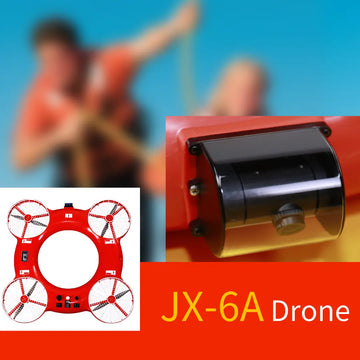Introduction
In today's fast-paced and experience-driven world, tourist destinations and water parks face the dual challenge of ensuring fun and safety for millions of annual visitors. With high foot traffic, unpredictable behaviors, and diverse demographics, the risk of accidents is an ever-present concern. Traditional emergency response methods often fall short in such dynamic environments. This is where intelligent rescue systems come into play, offering real-time, efficient, and scalable solutions tailored for high-density recreational venues.
Why Smart Rescue Systems Are Essential in High-Traffic Tourist Zones
High-traffic areas such as theme parks, waterfront attractions, and resorts demand faster, more coordinated emergency responses. Delays can lead to severe consequences, not only in terms of human life but also brand reputation and financial liabilities. Smart rescue solutions integrate advanced technologies like AI-powered surveillance, real-time location tracking, and automated alert systems to ensure that help arrives within seconds, not minutes.
Key Features of an Intelligent Rescue System
-
Real-Time Monitoring & AI Analytics: High-definition cameras and AI-driven software monitor visitor behavior, identifying unusual patterns such as drowning signs, falls, or congestion.
-
Automated Emergency Alerts: When an incident is detected, automated systems instantly notify nearby lifeguards, medics, and management staff, reducing reaction times.
-
Wearable Safety Devices: Smart wristbands or trackers worn by guests can monitor vital signs, send SOS signals, and help locate missing individuals.
-
Integrated Communication Platforms: Centralized dashboards ensure that all emergency personnel receive synchronized updates for coordinated actions.
-
Drones and Robotic Lifesavers: In water-based environments, drones equipped with flotation devices or robotic lifeguards can be deployed instantly to aid victims before human rescuers arrive.
Benefits for Stakeholders
-
Operators: Enhanced safety metrics, fewer liabilities, and better operational efficiency.
-
Visitors: Greater sense of security and improved experience.
-
Emergency Responders: Clearer information, faster access to incident sites, and reduced risks.
Global Success Stories
From Singapore's Sentosa Island to Dubai's Aquaventure Waterpark, smart rescue technologies have already demonstrated success in reducing response times and improving safety outcomes. These implementations serve as benchmarks for facilities worldwide aiming to upgrade their emergency response capabilities.
Implementing Smart Rescue Solutions: Best Practices
-
Conduct a thorough risk assessment to understand potential hazards.
-
Choose interoperable technologies that integrate smoothly with existing infrastructure.
-
Train staff comprehensively on system usage and emergency protocols.
-
Engage in continuous testing and updates to maintain system efficacy.
-
Partner with technology providers who offer customization and scalability.
Conclusion
As global tourism rebounds and water parks continue to attract thrill-seekers, the need for proactive, intelligent safety solutions has never been greater. Investing in smart rescue systems is not just a technological upgrade—it's a commitment to protecting lives, enhancing guest trust, and securing long-term success in a competitive entertainment landscape.





